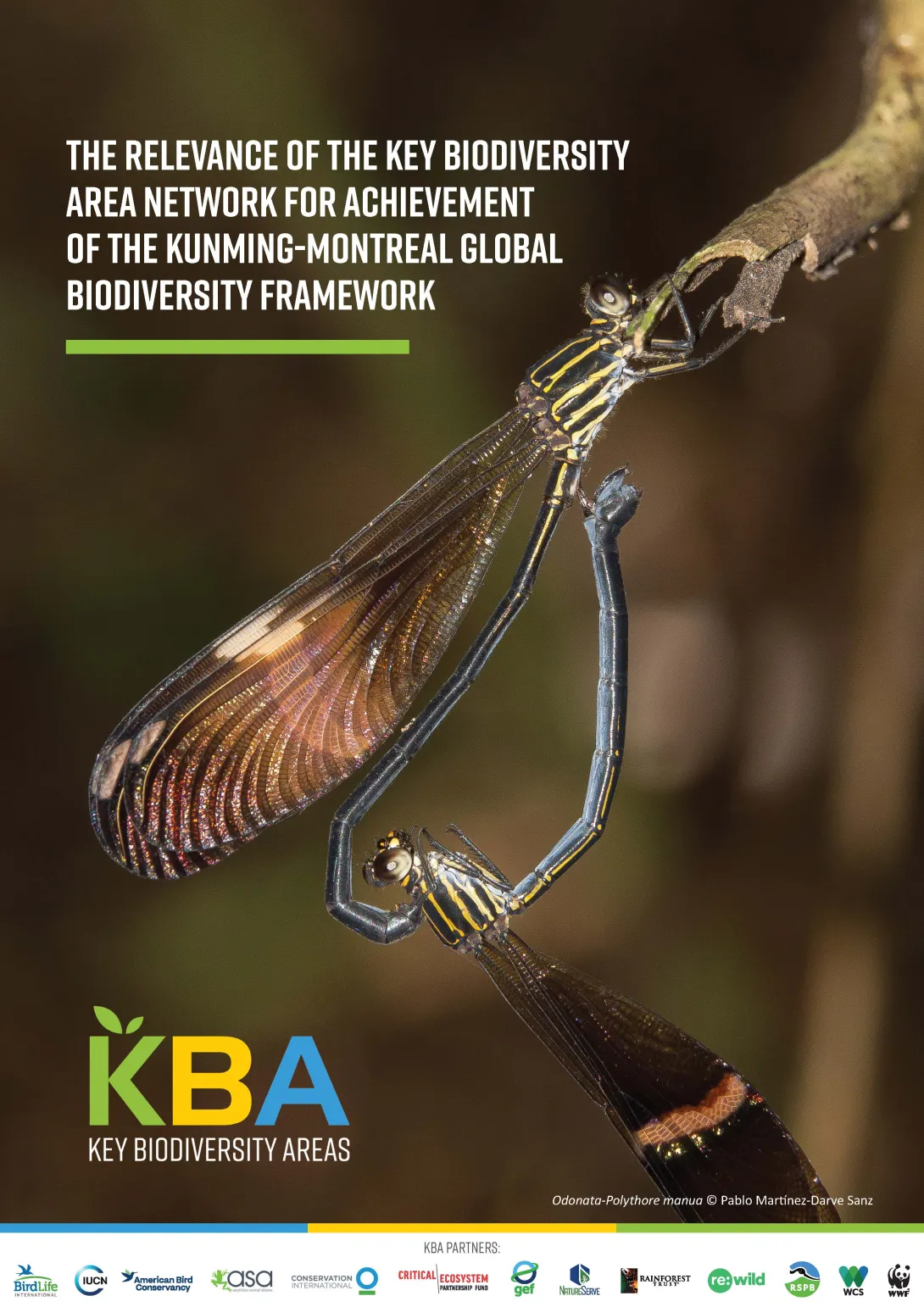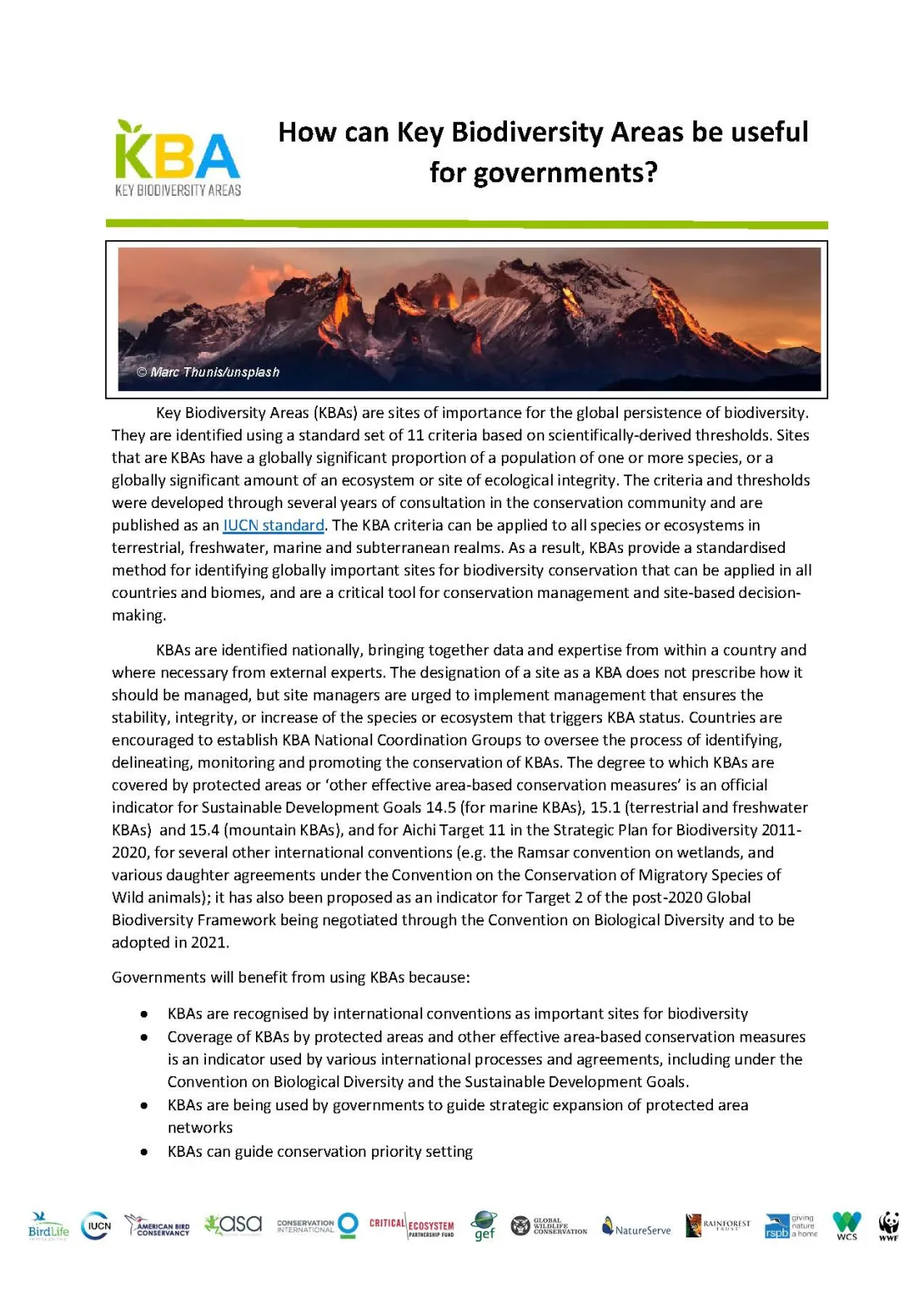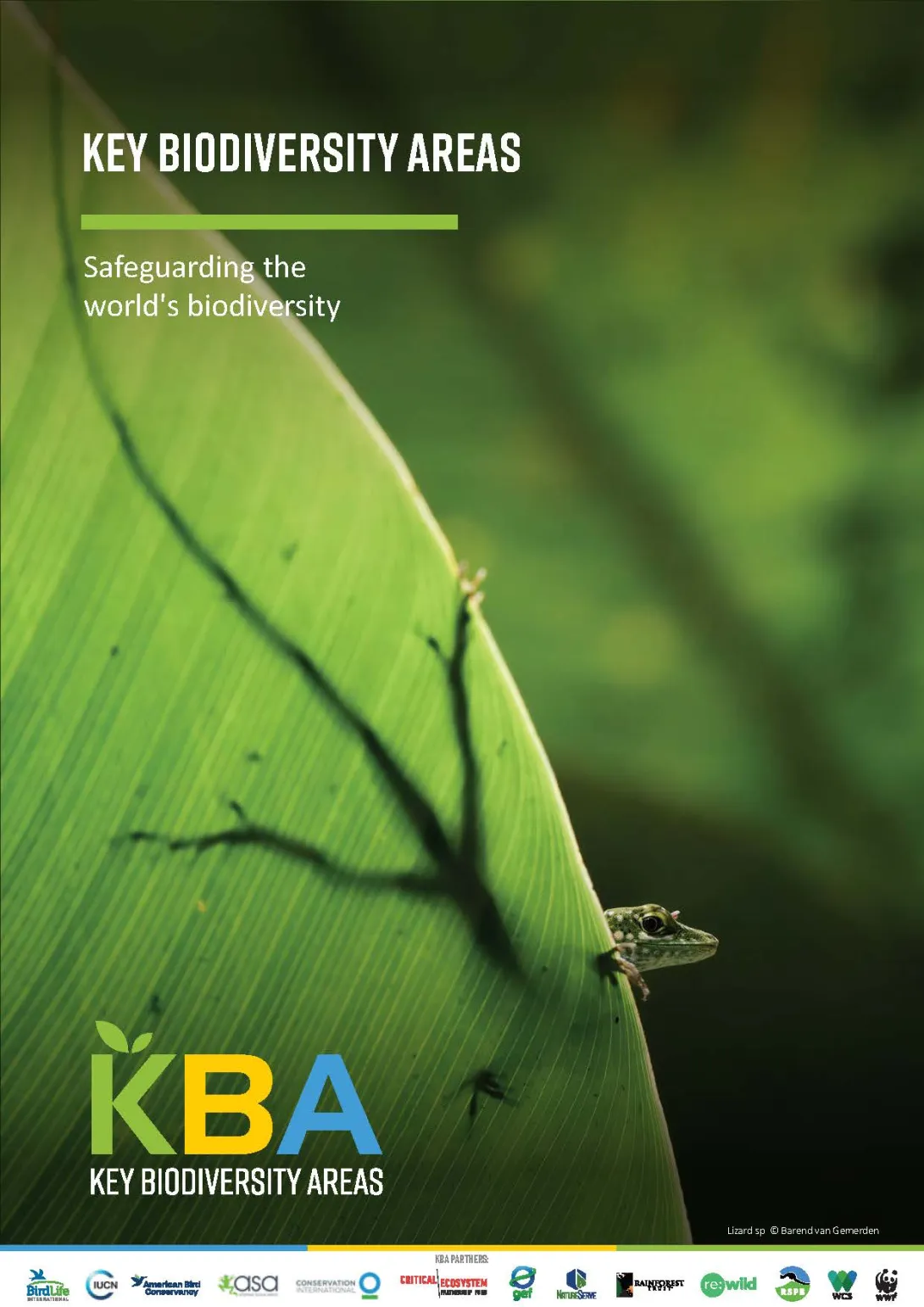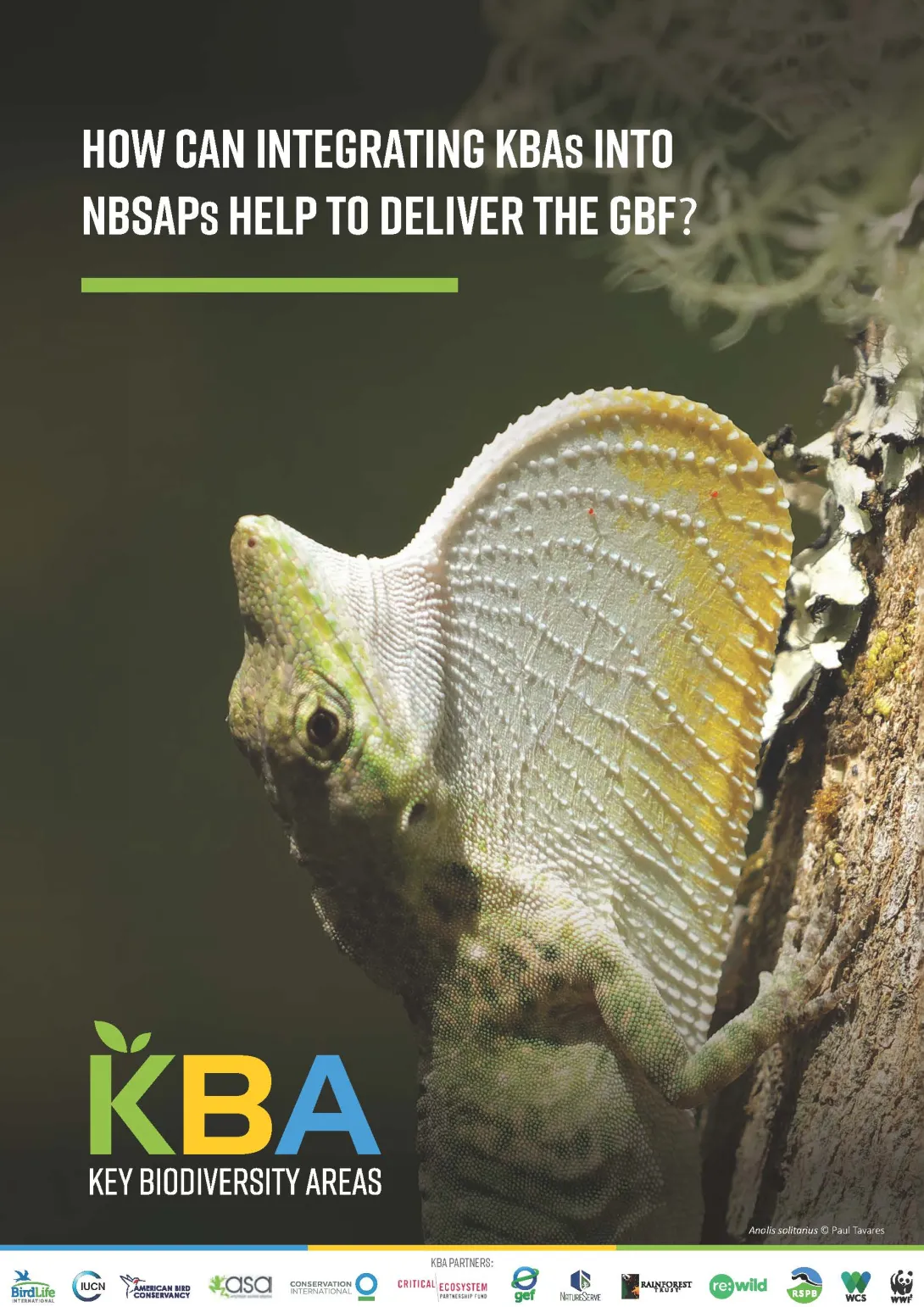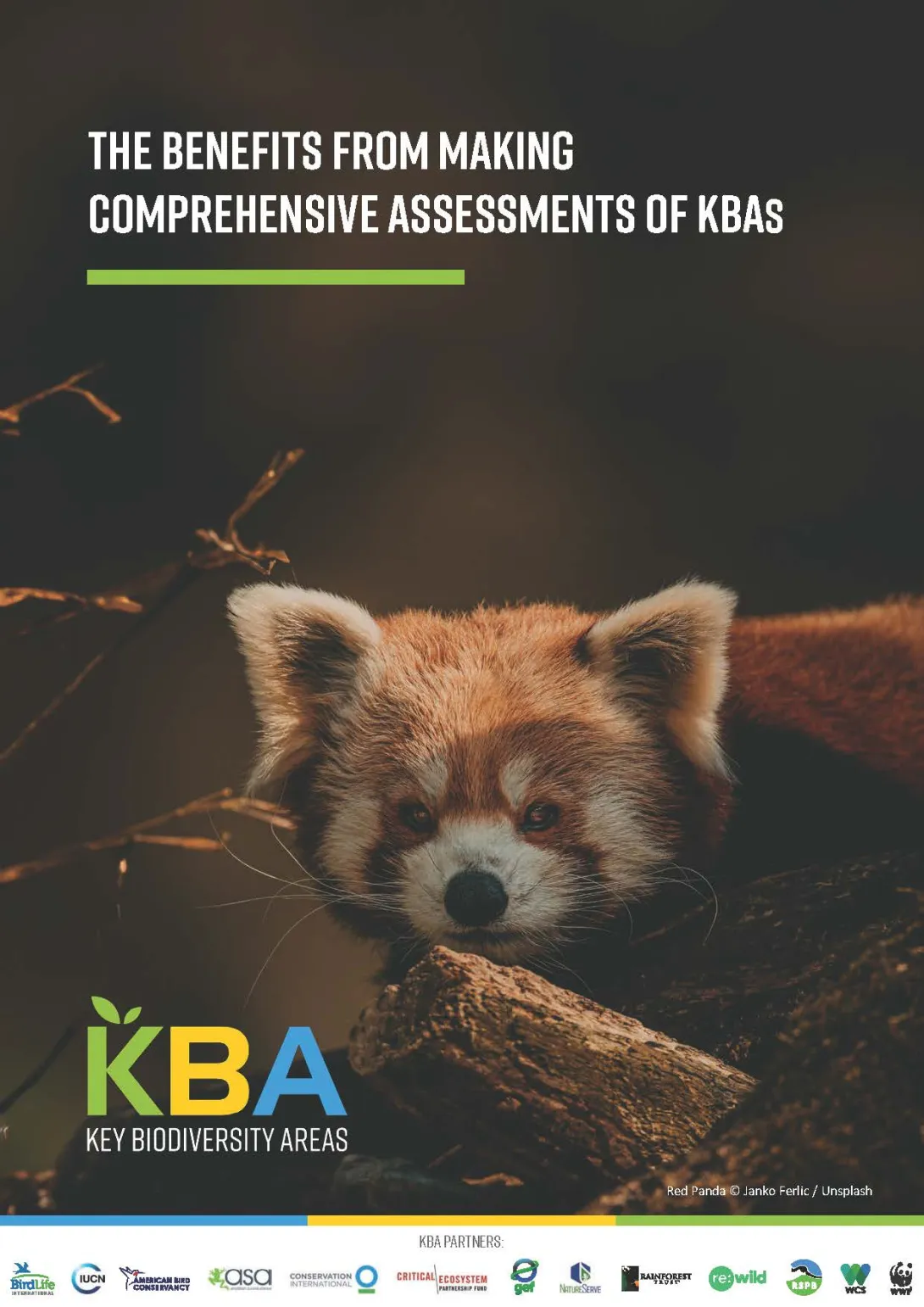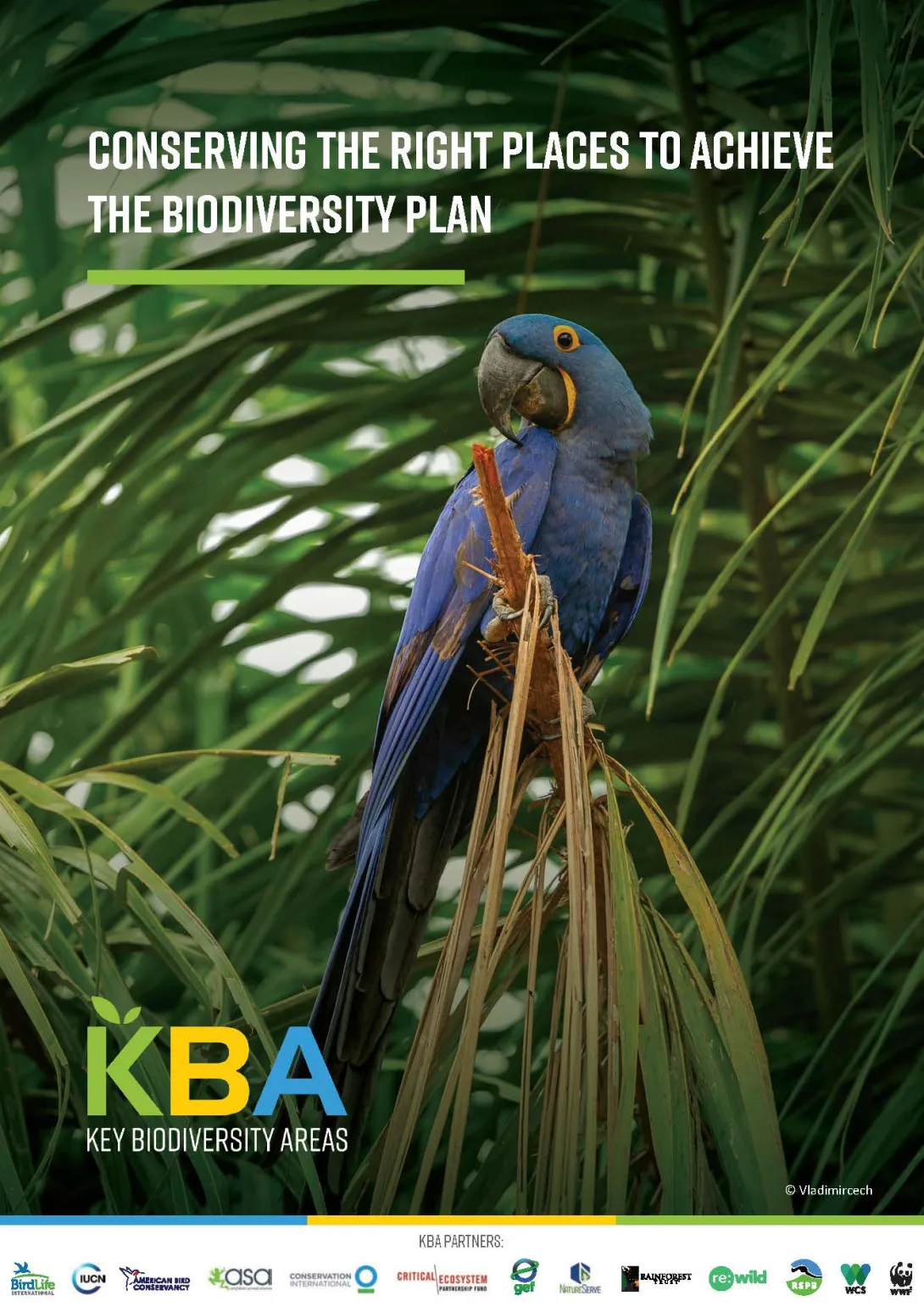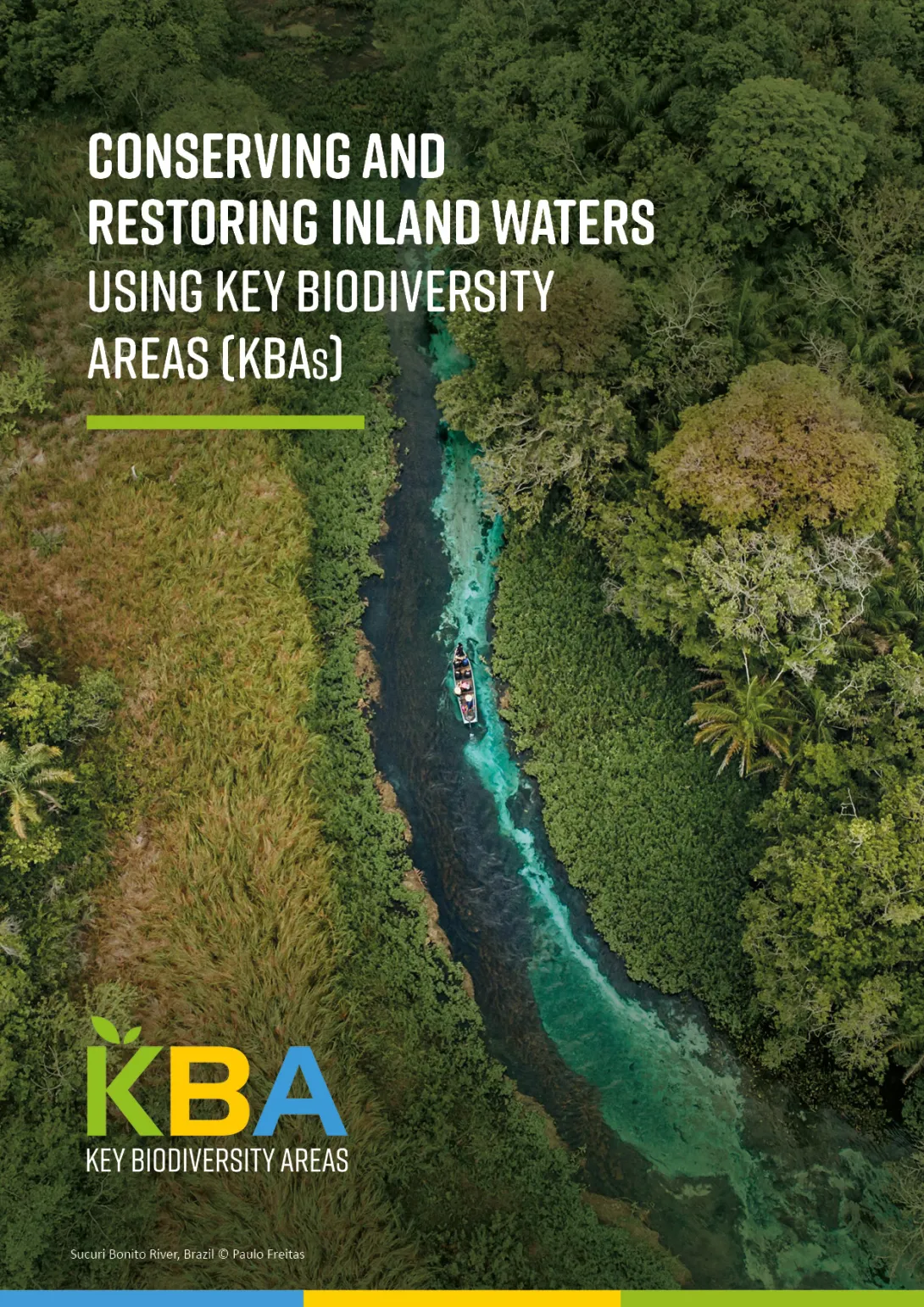How KBAs shape National Conservation Plans
Identifying KBAs is a cornerstone of any effective national spatial conservation plan, as the KBA criteria ensure a comprehensive assessment that covers multiple taxonomic groups, ensuring an array of biodiversity elements are represented. Applying the criteria ensures that where a country has a responsibility for a globally significant population of a species or part of an ecosystem, these are identified and incorporated in national spatial plans.
While almost every country has identified at least one KBA, most have not comprehensively assessed their KBAs across all species and ecosystems. Consequently, many KBAs remain unknown and unmapped. Where comprehensive assessments have been made, recognised KBA areas have more than doubled.



